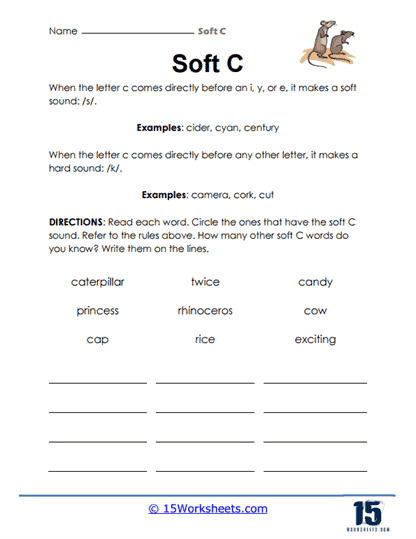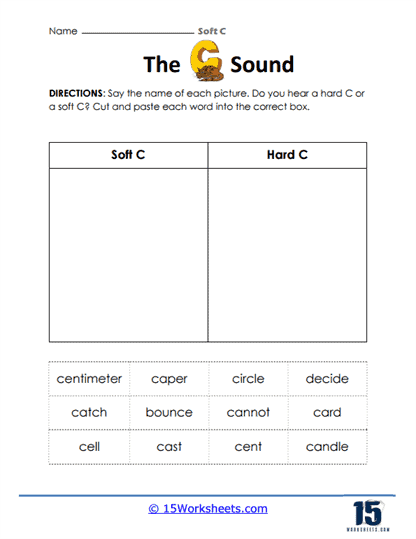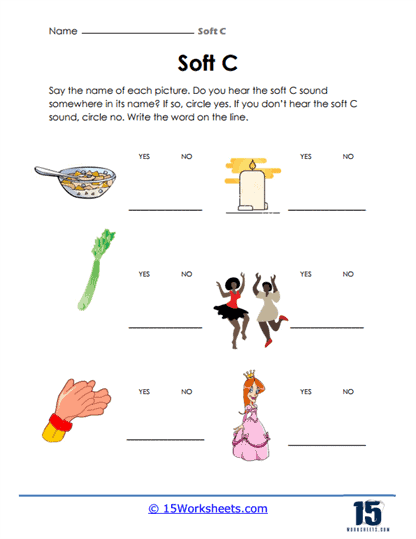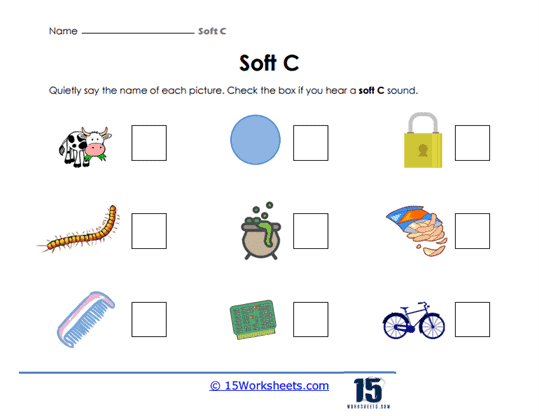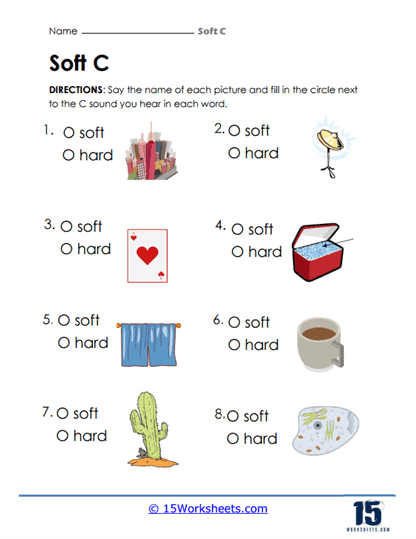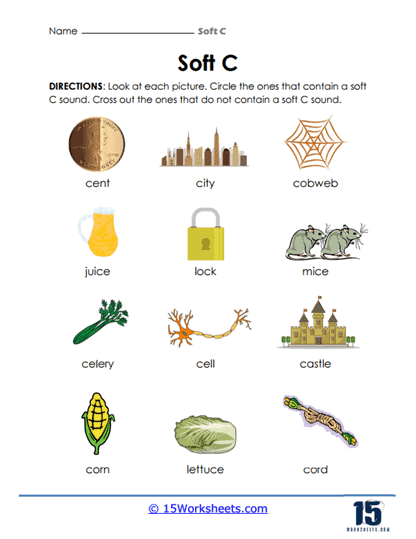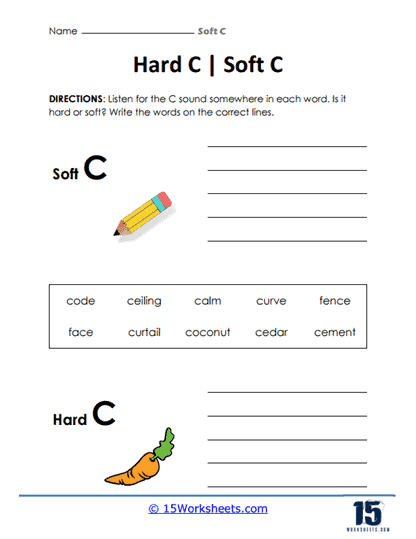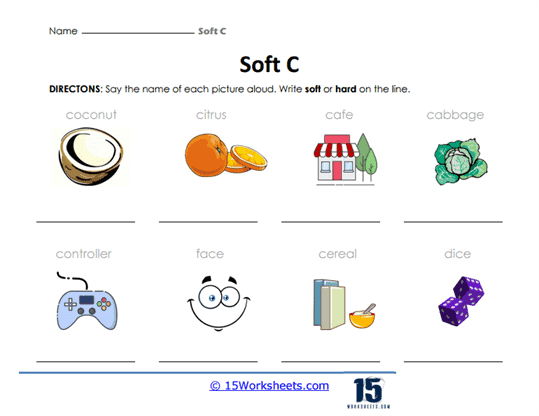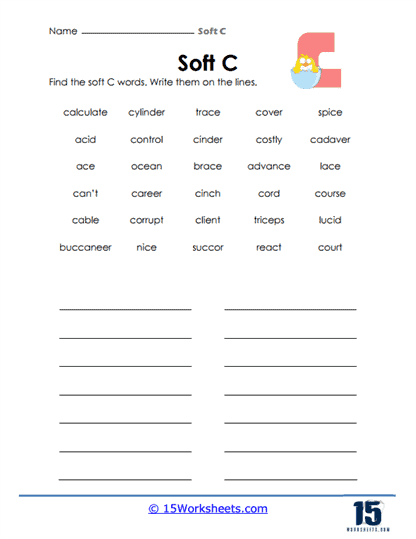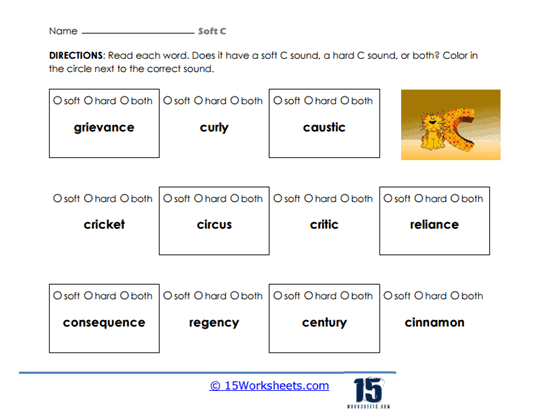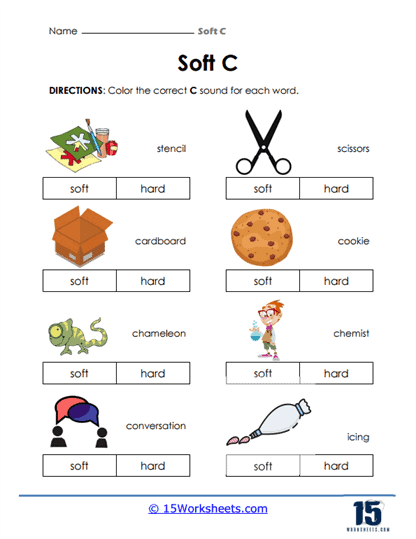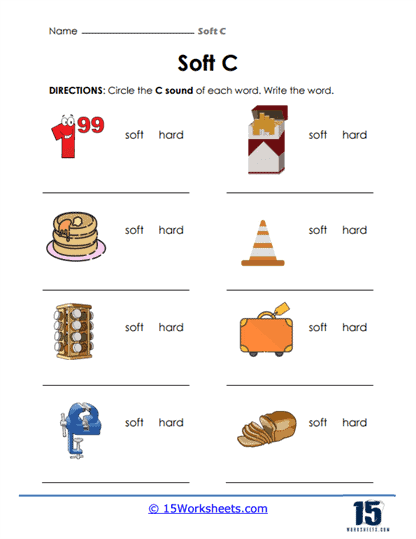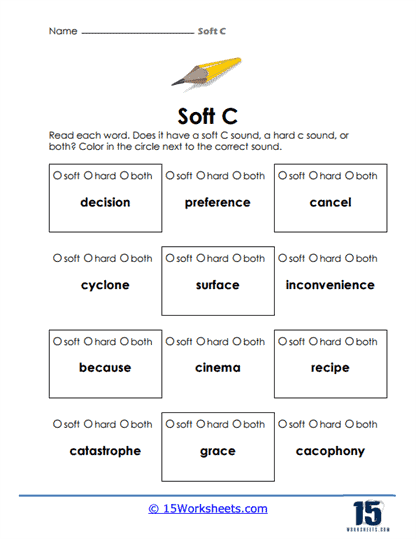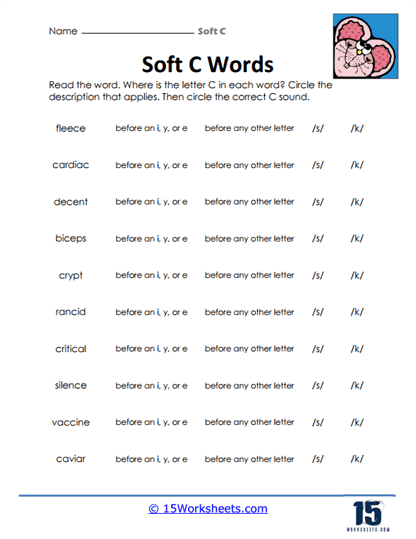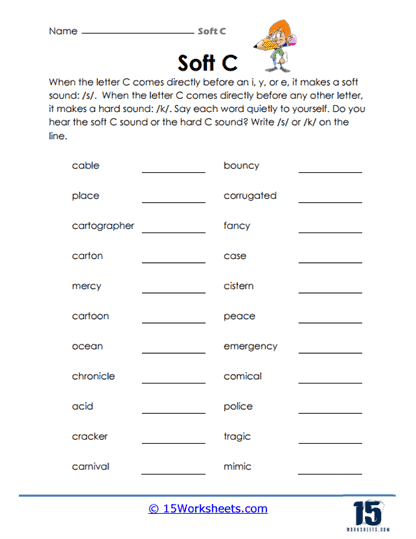Soft C Worksheets
All About These 15 Worksheets
In the realm of phonics and early literacy, the sounds of letters and their combinations are the building blocks of reading and spelling. Among these sounds, the soft ‘C’ sound is a significant phonemic element in the English language. Mastery of this sound is essential for young learners, as it is found in a multitude of words and plays a pivotal role in reading, spelling, and overall language development.
To empower students to excel in this vital phonetic skill, we proudly present a collection of Soft C worksheets. These worksheets have been thoughtfully designed to provide students with structured and engaging opportunities to practice and refine their understanding of the soft ‘C’ sound.
What are Soft C Worksheets?
Soft C Worksheets are educational resources designed to help students practice and learn about the soft c sound, which is the “s” sound made by the letter “c” when it appears before the letters “e,” “i,” and “y” in words. These worksheets often include various activities, such as matching, sorting, or writing exercises, that focus on identifying and distinguishing between words that contain the soft c sound.
What Are Soft C Sounds?
The term “soft C” refers to the pronunciation of the letter “C” as the /s/ sound, similar to the sound of the letter “S”. The soft C sound occurs when the letter “C” appears before the vowels “E”, “I”, or “Y”.
Here are a few examples of words with the soft C – Cereal, City, Circle, Cell, Cipher, Cinema, Cyclone, Icicle, Cease, Century
In contrast, when the letter “C” appears before the vowels “A”, “O”, or “U”, it is generally pronounced as a hard C, which sounds like the /k/ sound. For example, words like “cat”, “cot”, and “cup” have a hard C sound.
Understanding the difference between soft C and hard C is essential for learners in reading, pronunciation, and spelling.
How To Teach Soft C To Students
Teaching students soft C words involves helping them understand the pronunciation rule, providing examples, and engaging them in activities that reinforce the concept. Here are some steps to teach soft C words effectively:
Introduce the Rule – Explain the soft C pronunciation rule to your students, which states that the letter “C” is pronounced as the /s/ sound when it appears before the vowels “E”, “I”, or “Y”. Make sure they understand the difference between the soft C and the hard C sounds.
Provide Examples – Give your students examples of soft C words, such as “city”, “circle”, “cereal”, “cent”, and “cycle”. You may want to create a list of soft C words for students to reference during the lesson.
Practice Pronunciation – Have students practice pronouncing soft C words aloud, focusing on the /s/ sound. You can ask them to repeat the words after you or have them practice reading the words in pairs or small groups.
Word Sorting Activity – Provide students with a list of words that include both soft C and hard C sounds. Have them sort the words into two categories, one for soft C and one for hard C. This activity will help reinforce their understanding of the pronunciation rule.
Fill-in-the-blank Exercises – Create fill-in-the-blank exercises that include soft C words, and have students complete them. This will help them practice identifying and spelling soft C words in context.
Word Building – Provide students with letter tiles or cards and ask them to create soft C words. This activity will help them practice identifying and manipulating the letter combinations that produce the soft C sound.
Games – Incorporate games that focus on soft C words, such as word bingo, memory matching, or word puzzles. Games can make learning more engaging and enjoyable for students.
Reinforcement Through Reading and Writing – Encourage students to read texts that include soft C words, and ask them to identify the words as they encounter them. In writing exercises, have students incorporate soft C words in their compositions to practice using the words in context.
Review and Assess – Regularly review the soft C rule and provide additional practice opportunities as needed. Assess students’ understanding of the concept through informal checks, quizzes, or assessments.
By introducing the soft C pronunciation rule, providing examples, and engaging students in various activities, you can effectively teach them to recognize and use soft C words in their reading and writing.
The Importance of Soft C
Understanding and mastering the soft ‘C’ sound is of great significance for several reasons:
- Reading Proficiency: Accurate recognition and pronunciation of the soft ‘C’ sound are fundamental for fluent reading. They enable students to decode words correctly and comprehend text effectively.
- Spelling Competence: Proficiency in spelling words with the soft ‘C’ sound enhances students’ overall spelling skills. When they can accurately identify and use this sound, they are better equipped to spell words correctly.
- Phonemic Awareness: Recognizing and manipulating the soft ‘C’ sound fosters phonemic awareness—the ability to identify and manipulate individual phonemes (sounds). This skill is crucial for literacy development and reading comprehension.
- Vocabulary Growth: Learning and using words with the soft ‘C’ sound exposes students to a wider range of vocabulary, enriching their comprehension and language skills.
This collection of Soft C worksheets is a valuable resource for educators and parents committed to supporting their students’ phonics and literacy development. Proficiency in recognizing and using the soft ‘C’ sound is a foundational skill that opens doors to reading fluency, comprehension, effective spelling, and vocabulary growth.
By using these engaging worksheets, students will strengthen their ability to recognize and use the soft ‘C’ sound with confidence. This collection is an investment in their future success, ensuring they have a solid foundation in phonemic awareness, phonics, spelling, and vocabulary.

